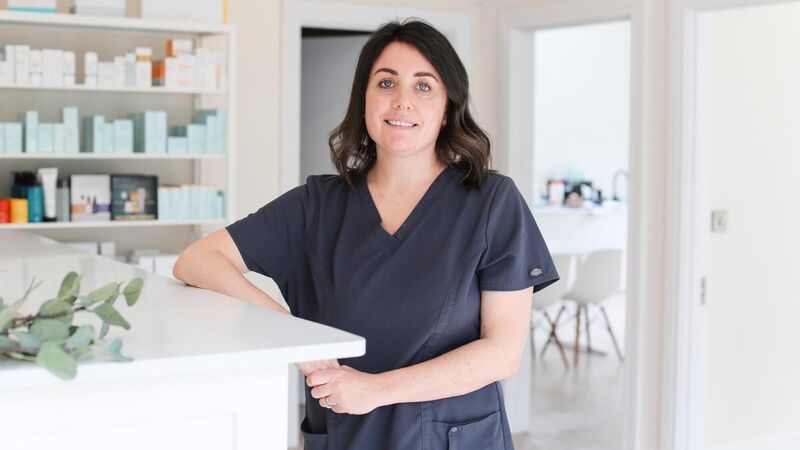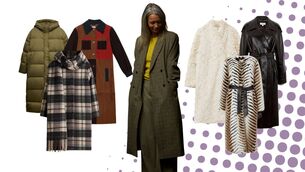Simone Gannon: A beginner's guide to retinol

Dr Laura Lenihan, Dr Laura Clinic
‘Retinol helps ageing skin by promoting cell turnover’, says Dr Louise Smyth, Founder of Kins Skin Clinic. ‘It essentially makes your skin act as it did when you were a child. It makes the skin ‘fall off’ regularly and is replaced by a new, healthier, stronger layer of skin.’ It promotes collagen production, fades dark spots, reduces the appearance of fine lines and wrinkles, helps to reduce the production of oil, and firms and plumps the skin, among many other benefits. So far, so straightforward. So why is there often much confusion when it comes to Retinol? The answer lies in its slightly complex family tree.
Retinol is a form of Vitamin A and belongs to a family of ‘Retinoids’ - a class of skincare ingredients used to tackle a variety of concerns in the skin. Like most families, there is a hierarchy, and not all members are equal – each has a different strength and affects the skin at different rates. The strongest member of the family is Retinoic Acid or Tretinoin, and only available on prescription. The next strongest is Retinal or Retinaldehyde, followed by Retinol – the most well-known form, less potent than the others but also much less irritating (which is why it’s so popular).
‘It depends on each individual.’ Says Dr Laura Lenihan, Founder of Dr Laura Skin Clinic. ‘Starting in your late twenties is usually a good time, but if you have fine lines or oily, congested skin, the earlier, the better. It’s important to note that it is never too late to start using Retinol’. Dr Louise Smyth concurs, ‘I find women who start using Retinol later are incredibly dedicated and will work through any irritation to see results. They are more motivated to undo changes they can see in the mirror. It may take 6-12 months, but the results can be incredible if they persist.’
While it’s never too late to start and generally suitable for everyone, there are some instances where Retinol should be avoided. ‘Retinol (and Retinoids in general) are one of the big things that we don’t use in pregnancy’, says Dr Laura Lenihan. ‘I usually recommend acids and antioxidants in pregnancy to keep the skin glowing, and then start or recommence with Retinol post-pregnancy and breastfeeding.’ Retinol should also be cautiously approached by those with rosacea, eczema or very sensitive skin, as it can potentially increase inflammation.

Yes, but not always. Retinol works by generating changes in the skin by speeding up cell turnover, which can irritate. ‘There is usually a repair phase while first acclimatising to Retinol that isn’t enjoyable for many!’ explains Dr Louise Smyth. ‘It can lead to your skin feeling dry and sensitive. It can cause other products you put on to sting a little and cause your skin to be flaky, which means your make-up doesn’t sit as well.’
Retinol should always be used on dry skin, at night, after cleansing, and before other serums and moisturisers. Applying to damp skin can increase the chances of irritation. The frequency of use at the beginning should be slow, once or twice weekly. ‘Applying too many days in a row when first starting gives a cumulative dose,’ says Dr Louise Smyth. ‘Irritation from Retinol only starts three days after application, so it’s always best to start with three-day gaps between applications.’
What about other products in your skincare routine? What should be avoided when using Retinol? ‘There is much discussion about using exfoliating acids and Retinol in the same routine’, says Dr Laura Lenihan. ‘I generally recommend using exfoliating acids in the morning and retinol at night to reap the benefits of both without increasing irritation.’
Not in the beginning, says Dr Laura Lenihan. ‘We use over-the-counter Retinoids in the clinic all the time to eventually move the patient up to prescription strength, and we have seen some fantastic results. New research suggests you will get the same results with 1% Retinol as you would with Tretinoin but with less irritation. It will take significantly longer to get there, however.’
Retinol and Retinoids are a long game. According to Dr Laura Lenihan, some results can be seen within weeks, but it’s often much longer. ‘Realistically, you’re looking at six months to a year for true results. And even longer for a reduction in fine lines and wrinkles. The goal is just to start. Start using it and stay using it.’
There is much to learn about Retinol, and its complex extended family, so it’s essential to do your research before commencing use. Get expert advice, find a Retinol or Retinoid that’s right for you, slowly build it into your routine, and be patient. The results will come (eventually).







